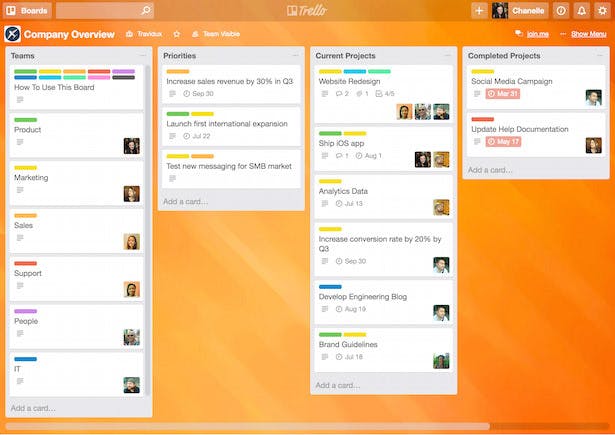If we’ve got the ability to get publishing to a company blog or other content stream, then the temptation is to start publishing, just get the thing moving and see what sticks.
I don’t doubt this approach has worked for some companies and people out there, but I often find that a lot of content marketing falters in the long term because of a lack of planning. A lack of planning means a lack of structure, and more than likely a lack of objectives. Not having these means increasing the probability of losing steam.
Much better to plan out your approach first, and then come back to that on a revolving basis after seeing what worked (and more importantly, what didn’t). Over the years, I’ve become familiar with a process. Each block of this process might seem simple in isolation, but it’s when you put it in the right order that it really works.
1. Research… deep research
You may know your focus area inside out. You might not. My advice at either end is to spend some time researching it – no one is going to have ‘completed’ their expertise in an area. Spending time researching will inevitably set off some fireworks and ideas you hadn’t thought of before. I suggest:
- Existing industry magazines, books and papers
- Competitor research – such as reading websites or their blogs
- The keyword planner, Soovle or Answer the Public can also throw up interesting queries. I wouldn’t worry too much about keyword volumes at this stage – you just need to create ideas that people could potentially be interested in.

I feel it’s important that people involved in this research do it as a deep focused individual activity. After all, you can’t discuss the latest 60-page government paper about a topic without having read it. That sounds obvious, but the deep activity is so often abandoned. Allow the time for deep research, allow it time to gestate, and then come up with ideas. It’s not much use frantically trying to cram some reading in 10 minutes before the next stage.
The outcome is really to have rough ideas that you will be able to present to a group.
2. Content brainstorm and mindmapping
Having done the research, bring those initial rough ideas together in the form of a brainstorm. Brainstorms have a bad reputation of being filled with meaningless jargon and not giving clarity. But this is usually because the deep research isn’t done properly – do it properly and they can work well as a collaboration.
Someone ultimately must be the arbiter of this process – if you don’t have an editor, you should appoint one (even if not in a literal job sense). You may find conflicts arise without a leader to the process – ie ‘Why is that idea being developed and not mine?’

Having a group discussion will allow you to validate certain ideas, and then build them into a more robust plan. One way of doing this is to put them into a hierarchy on a mind map. Mindmeister.com is a particularly useful group collaboration tool.
3. Data validate ideas using the keyword-based tools
Is there enough online interest in your ideas to return search volumes? One of the best tools to do this is SEM Rush, as it returns Google volumes for specific keywords according to your target market. You can also use a free tool with Neil Patel’s version of Ubersuggest.
You can use the Keyword Planner, Soovle or Answer the Public, but because of the limited data, these may be better used in the first phase.
4. Create groups according to content type
Now you’ve got a mindmap and validated it, it’s important to consider what category and page type they may fulfil – this will help put them into manageable lists in the next phase.
There are really three main types of content that we need to consider (H/T to this earlier article on Stock and Flow)
- Flow: Content that has a short shelf life, but can be written to meet a given topical trend. For instance, news – such articles may give you short, sharp burst of traffic.
- Stock: Content that has a long shelf life but is unlikely to ‘expire’. For instance, evergreen articles that are as relevant in six months as they are today. Product pages could likewise fall into this category.
- Curation: This is content that is curated from elsewhere. For instance, a series of embedded useful resources, like ‘The 5 best YouTube videos for simply explaining blockchain’.
These each have their own research and production considerations:
- Flow: Needs to be planned around events and executed in a timely manner around these events. Flow content is typically (although not always) shorter than stock.
- Stock: Normally needs expert advice or commentary. Research times for people who are not experts in the subject matter will be high.
- Curation: The sources need to be researched, but unless people have already seen what they will be including, then the research time could be high.
You will have created a content hierarchy in your mind map but adding in these considerations (possibly by labelling) may help you to better understand the production cost of the content.
5. Create an editorial calendar using Trello
When planning for content, the spreadsheet belongs in the bin. Why? Because it is in no way designed for that purpose. They are uncollaborative (even Google sheets is to this end), inflexible and whoever manages the spreadsheet will almost always end up wasting time formatting it, otherwise the input will be incomprehensible. I feel passionately about not using them.
Thankfully, there is a far superior alternative. It’s Trello.

Trello is basically a multi-use project management tool that allows you to create lists of content. This can work well from a subject matter sense. For instance, I have various lists for a travel brand.
Each list is made up of a card – essentially a piece of content. You can write a headline in it, put your description in it, assign people to it, discuss it, label it, date it, and on – there are six good reasons already why it is better than using a spreadsheet. You can also attach documents (like the article a freelancer has just written) directly to the card. So… much… better.
Bringing it all together
The outcome here is to get a well-documented content plan that can be flexible. One phase should lead to the next, and once you have the plan laid out in Trello, almost any contributor (whether internal or external) should be able to work according to the brief.
If you want more similar tips across the spectrum of content strategy, then see my earlier 24 ingredients for a delicious content strategy.
View Econsultancy’s Content Strategy Best Practice Guide (subscriber only) or check out our variety of content marketing training courses.

Comments